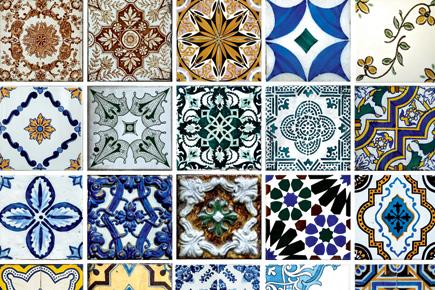Goa-based artist Shilpa Mayenkar’s paintings highlight the deep-rooted historical and socio-cultural relationship between Goa and Portugal, their post-colonial links and the effect of globalisation on the populace

The Portuguese Azulejo
Goa and Portugal are bound together intricately; the Portuguese ruled over the tiny state for 450 years and left an indelible influence on its culture and society. While Goa gained independence from Portugal in 1961, it was officially admitted to Indian statehood as late as 1987.

The Portuguese Azulejo tiles are now common across Goa; it is one among the many elements that have become a part of Goan culture due to the cultural exchange. Representative pic
In Escada, her debut solo exhibition, 33-year-old Goa-based artist Shilpa Mayenkar examines the socio-cultural and historical relationship between Goa and Portugal post-colonisation and the onslaught of globalisation on the local populace.
The title of the show, Escada, translates to staircase in Portuguese and is symbolic, implying the striving towards a better life. She was inspired from the staircase outside the Portuguese embassy in Goa where people wait for their visa appointments.
Mayenkar, who has won the Lalit Kala Academi award, investigates what it means for Goans to have an opportunity to apply for a European Union passport and whether moving to Europe necessarily implies an improved life. She is displaying acrylic on paper and canvas as well as on walls for site-specific artworks.
Mayenkar revisits her colonial roots by using cartographies to depict the breadth of the Portuguese empire and uses the ant as a leitmotif witnessing history. The artist uses the ant as a witness in many of her artworks because of its association with migration, trails and moving from one place to another.
Her artworks also depict the cultural exchanges that happened, including the elements that became common in Goa courtesy its colonial rulers. For example, cashews were introduced in Goa from Brazil, chillies were introduced by the Portuguese, blue tiles or Azulejos also gained prominence as did the making of lace that came from Europe to Goa. Mosaic titles made from broken china, which were brought from Macau as ballast, were dumped on the shores of Goa and become a common sight in households.
In a reverse colonisation, Goan nationals now migrate to Portugal (if they meet certain criteria, they are entitled to a Portuguese citizenship) aspiring to a better future. The artist questions whether this makes for a better life, and if it’s easy for an individual to leave behind their roots and family
ADVERTISEMENT
 Subscribe today by clicking the link and stay updated with the latest news!" Click here!
Subscribe today by clicking the link and stay updated with the latest news!" Click here!







